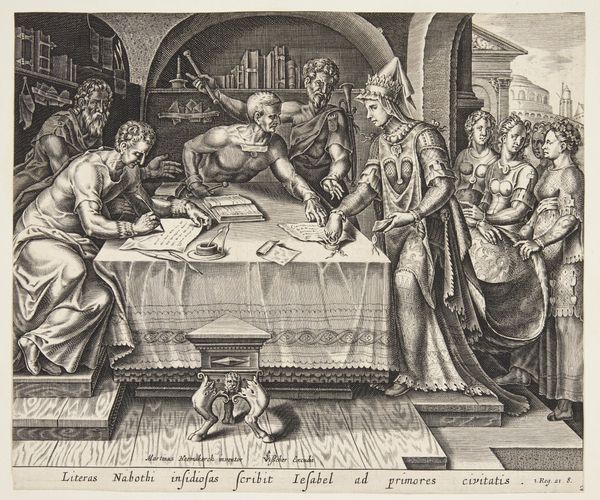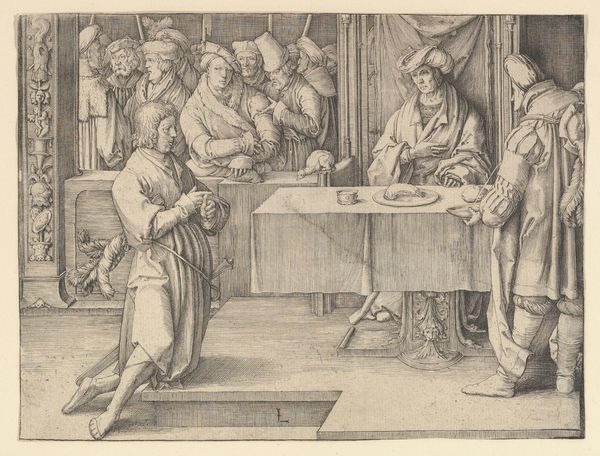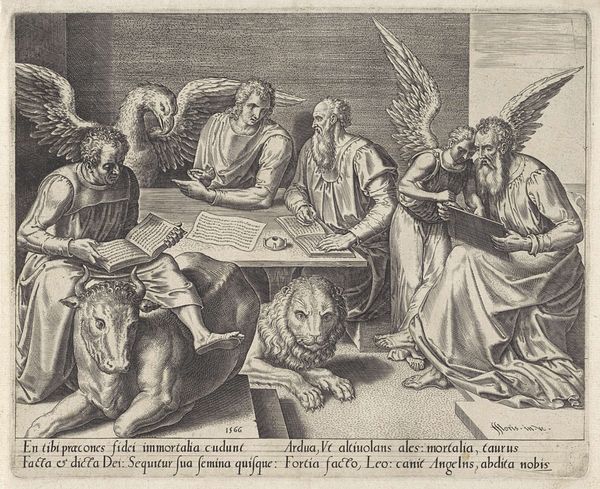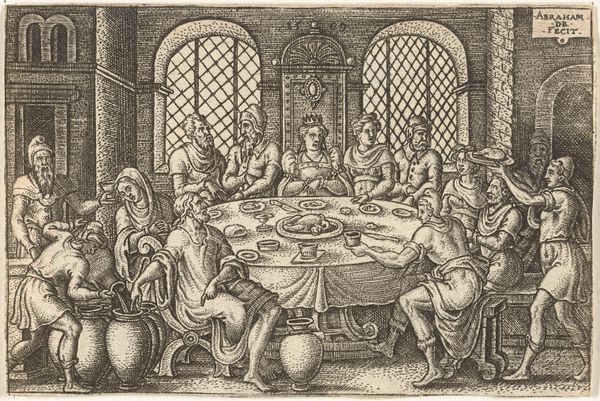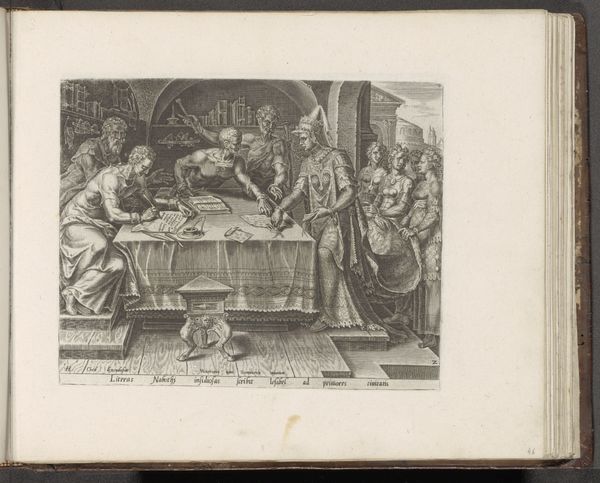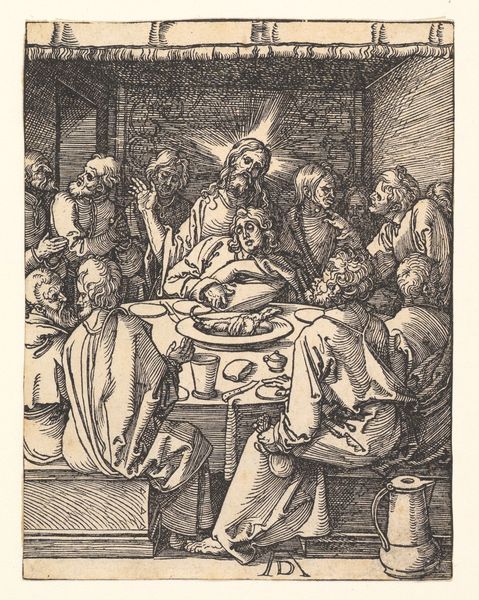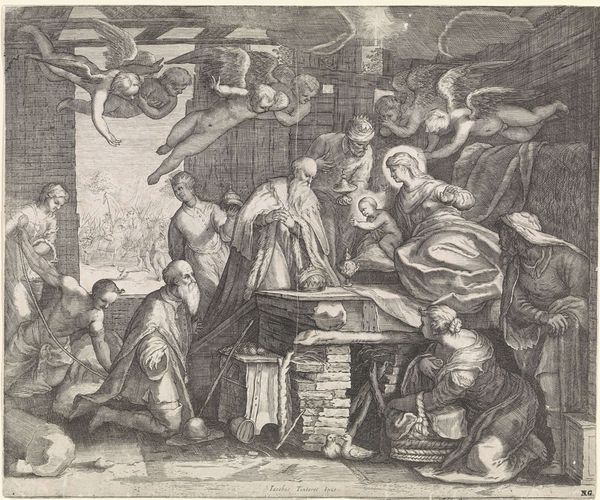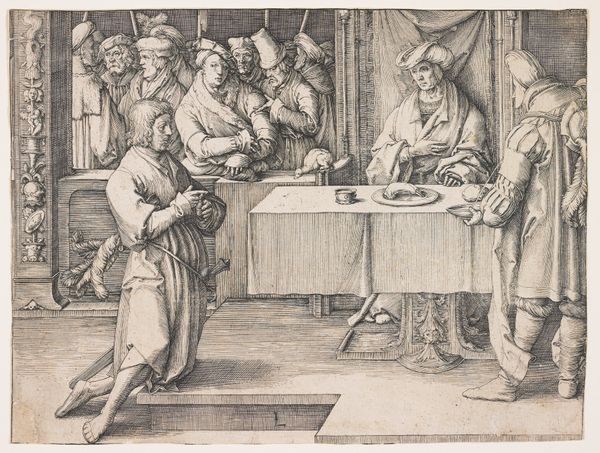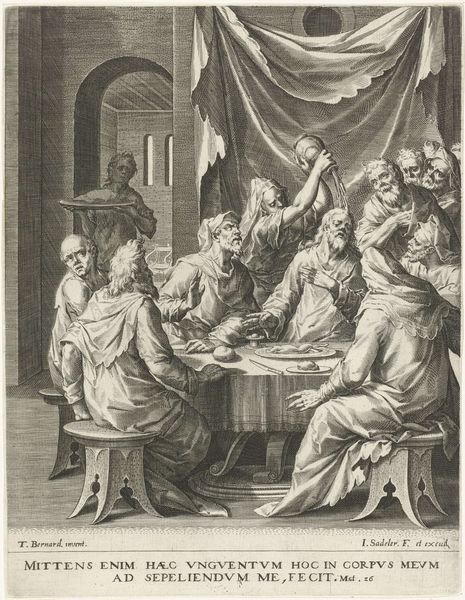
Izebel laat brieven naar de oudsten en aanzienlijksten sturen 1600 - 1652
0:00
0:00
print, intaglio, engraving
#
narrative-art
#
baroque
#
pen drawing
#
mechanical pen drawing
# print
#
pen illustration
#
pen sketch
#
intaglio
#
figuration
#
line
#
history-painting
#
engraving
Dimensions: height 208 mm, width 250 mm
Copyright: Rijks Museum: Open Domain
Curator: What a dense and intricate engraving. I feel immediately transported – or rather, like I've stumbled – into some shadowy, serious chamber. It makes me feel like an intruder! Editor: Intrusion can be insightful! Here we have "Izebel laat brieven naar de oudsten en aanzienlijksten sturen" – "Jezebel Sends Letters to the Elders and Nobles" – an early to mid-17th century print housed here at the Rijksmuseum. Its anonymous creation doesn’t diminish the historical punch it packs. Curator: Jezebel. Now there's a name that sings. Or rather, hisses. Even without knowing the biblical context, you feel a sort of… unease radiating from her figure, doesn't you think? The way she's posed, the details of her… armor-like dress. And then these guys on the left, scribbling away so earnestly. Are they being coerced? Editor: Absolutely. Jezebel, the Phoenician princess and queen consort of Israel, wielded significant power, and, yes, she abused it. This engraving depicts a scene from the Old Testament, specifically the story of Naboth, whose vineyard Ahab, Jezebel's husband, coveted. When Naboth refused to sell his ancestral land, Jezebel orchestrated his downfall through deceit. Curator: Deceit rendered so precisely! It's incredible how the artist conveyed this drama in monochrome and such tight lines. Do you notice how almost everyone avoids eye contact? The visual tension practically vibrates. It is almost theatrical; I could almost stage-direct this! Editor: And the bodies. Note the hyper-masculine men and the musculature, contrasted with the decorative patterning of Jezebel's garb and her female attendants. The power dynamics inherent in gender and political hierarchy are visually emphasized. These are tools of propaganda. Curator: Ah, tools… a bit like that mallet raised menacingly over the table! Editor: Exactly. And by placing that violent imagery within this domestic, even administrative, setting, the artist is commenting on the insidiousness of power, how it seeps into the everyday, corrupting even seemingly mundane acts like writing a letter. Curator: So, beyond the surface drama, the artist implicates systems. Wow. That really shifts my view. It felt like peering in on a private, albeit tense, meeting before; now, I recognize how the setting becomes allegorical to the abuse and control that women face to this day. Editor: The ability of visual narratives to reach through time and spark conversations about oppression and complicity remains vital. Thank you, as always, for the invitation to examine this. Curator: And thank you for providing context, bringing alive something which appeared as nothing but a dramatic historical rendering. Now, on to the next intrusion, shall we?
Comments
No comments
Be the first to comment and join the conversation on the ultimate creative platform.
